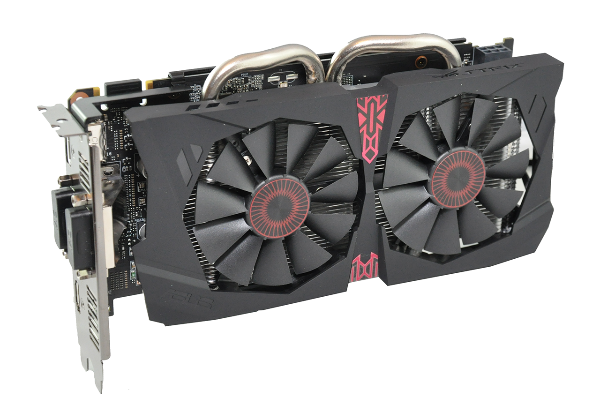Early Verdict
Asus GTX 950 offers excellent graphics and cooling performance while remaining nearly silent at all times. It delivers incredible performance per dollar, and nearly renders the GTX 960 obsolete. Gaming at 1080p and below is a treat on this card.
Pros
- +
Quiet – Silent under 60-degrees – Low power draw – Good overclocker
Cons
- -
2GB buffer -
Why you can trust Tom's Hardware
Introduction
Nvidia's new GeForce GTX 950 offers more performance than a modern console at a price point befitting gamers on a budget. It's being positioned as an entry-level card with enough muscle to play the latest titles at 1080p on a 1080p display at a $160 price point. The GPU is a cut-down version of the GTX 960's GM206 operating at a base clock of 1024MHz and a typical GPU Boost frequency of 1188MHz. Nvidia says the chip is highly overclockable, so there should be much faster versions available. This implementation of GM206 features 768 CUDA cores rather than the 1024 found in GeForce GTX 960, and its texture units are down 16 to a total of 48. The memory paired with the GTX 950 is somewhat slower than the 960's 7 GT/s modules. Instead, you get 2GB at a data rate of 6.6 GT/s on a similar 128-bit bus.
Nvidia has been rolling out Maxwell based GPUs for more than a year and a half now, with entries at pretty much every price point except the lowest tier. For gamers pinching their pennies, GeForce GTX 650 satisfied the hunger for affordable speed at 1080p. But with the introduction of its GTX 950, Nvidia expects that owners of GTX 650 cards will be looking to upgrade. That Kepler-based board lacks many of the new card's features, such as DX12 feature level 12.1 and HDMI 2.0 support. And, for the first time, this price tier offers the option to use SLI. The GTX 950 is also being billed as an excellent first GPU for those just getting into gaming, or currently using an on-board solution.
Compared to a GeForce GTX 650, which Nvidia says is still the eighth most popular GPU today, the GTX 950 purportedly offers as much as three times the performance and twice the performance per watt. The GTX 950's power rating is 90W, and, like other Maxwell-based GPUs, is designed to draw as little power as possible when not in use. Nvidia makes it a point to mention certain partner boards will offer a semi-passive mode for quieter operation at idle.
Of course, the GeForce GTX 950 supports technologies like G-Sync and Nvidia’s VisualFX suite, which includes the GameWorks toolset (FaceWorks, HairWorks, WaveWorks, etc.) and HBAO+. These cards also support the proprietary PhysX, FleX and OptiX technologies. Additionally, the GTX 950 enables MFAA, Nvidia’s proprietary anti-aliasing technology claimed to deliver 4x MSAA quality with the equivalent performance hit of 2x MSAA. There's a new video engine in there as well that supports native HEVC/H.265 decoding and encoding at the hardware level. The result is 4K playback at a smooth 60 FPS.
During the development of the GTX 950, Nvidia says it put a lot of emphasis on optimizing for MOBA players. Multiplayer Online Battle Arena games are incredibly popular, and getting more so every day. There are an estimated 30 million people who play MOBA games like DOTA II and League of Legends every month, and these titles demand extremely fast response time. Frame rates aren’t as important, since these games aren’t tremendously demanding. But responsiveness is the difference between winning and losing. So, starting with the GTX 950, GeForce Experience has the ability to optimize for this new metric. The company made changes to the way it renders games specifically to improve input response time. Specifically for MOBA-style games, multi-frame buffering is disabled. Nvidia said it found that this helped reduce response time from 80ms (on average) on a GTX 650 to 45ms on a GTX 950. Currently, these MOBA-specific presets are only available for GTX 950 owners, but Nvidia plans to expand this feature to the rest of the GeForce line-up at a later date.
The GeForce GTX 950 we're looking at today comes from Asus, which overclocked the board and topped it with DirectCU II cooling. Let’s see if it lives up to Nvidia’s claims.
Get Tom's Hardware's best news and in-depth reviews, straight to your inbox.
Kevin Carbotte is a contributing writer for Tom's Hardware who primarily covers VR and AR hardware. He has been writing for us for more than four years.
